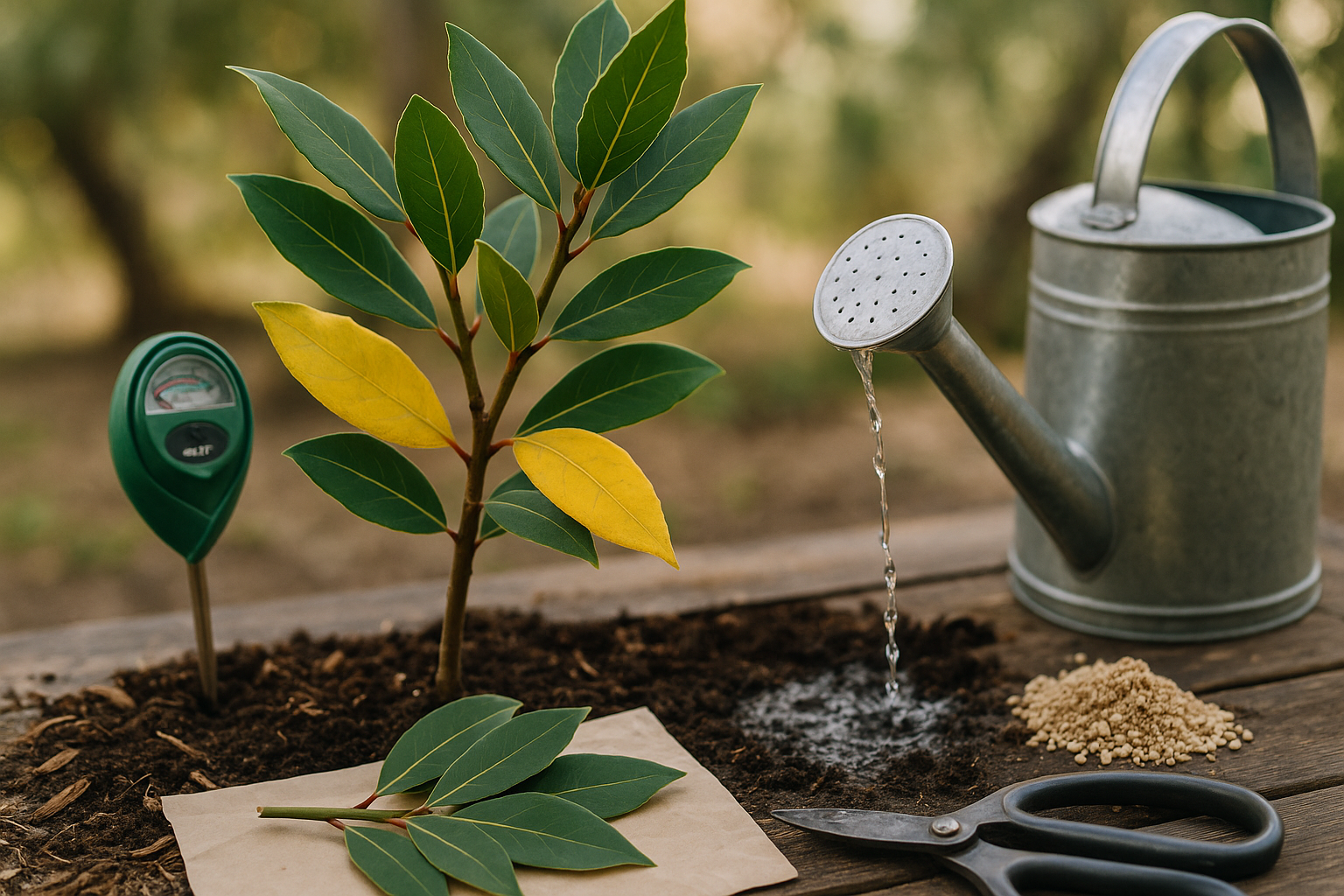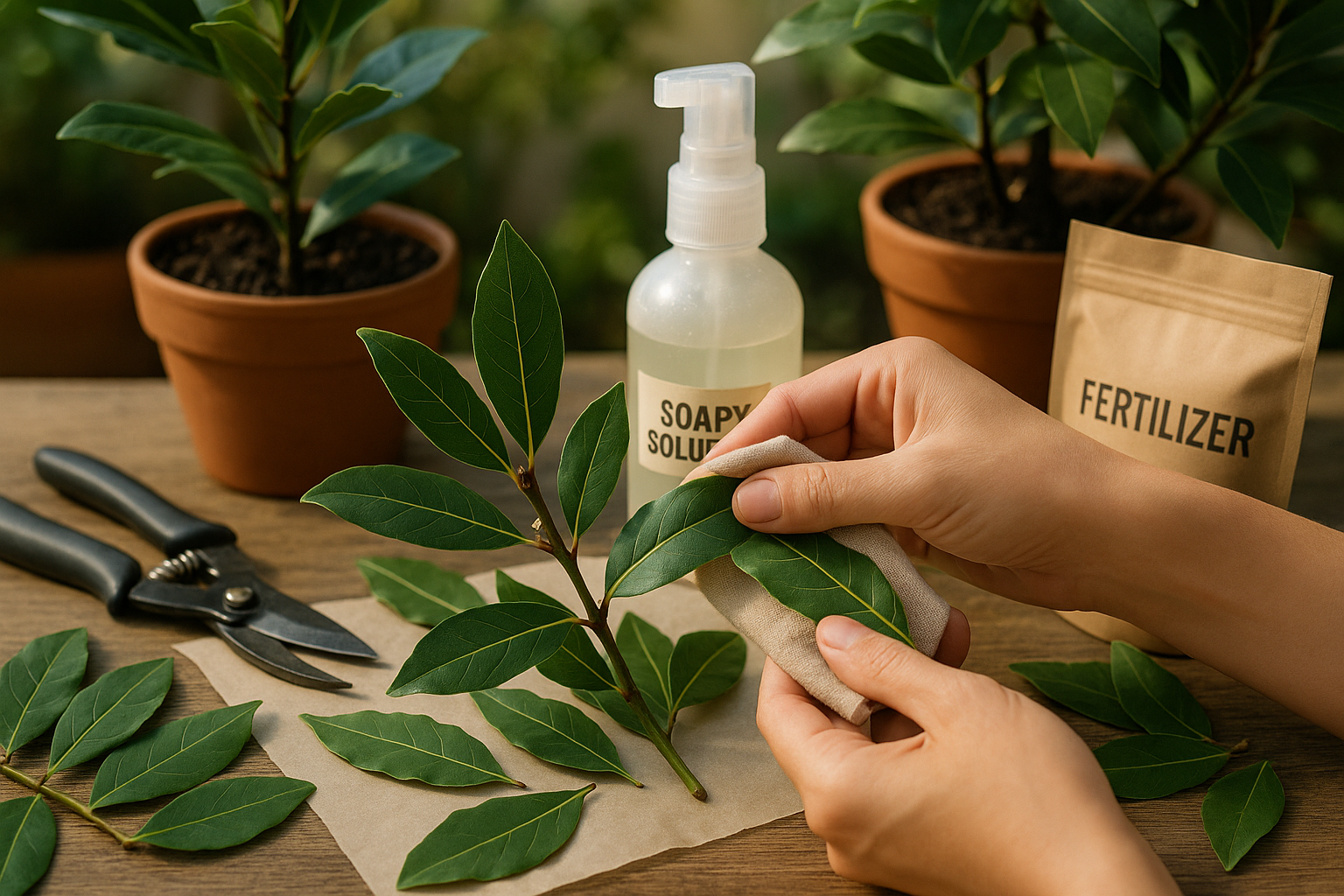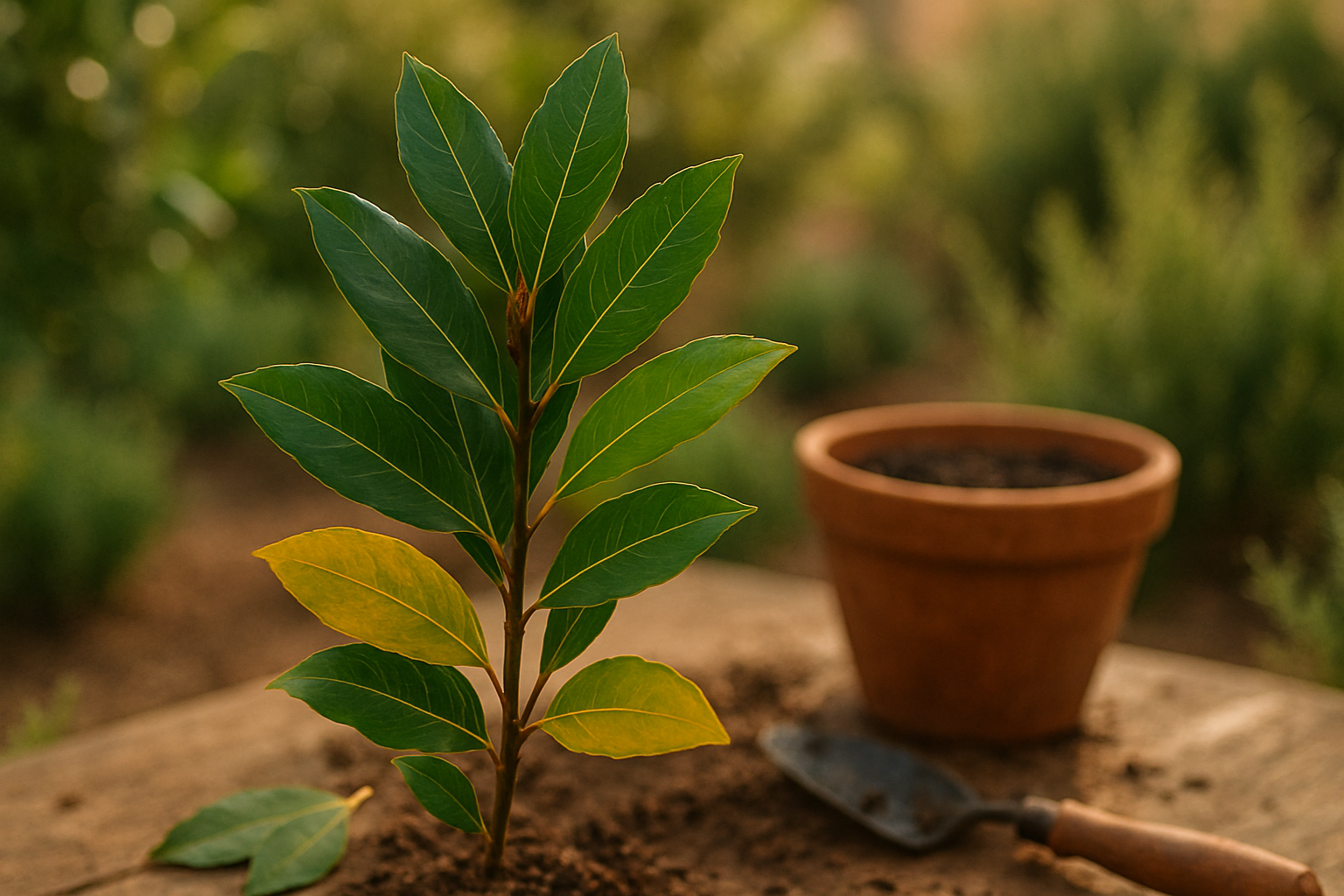Why Bay Leaves Turn Yellow

Bay leaves turning yellow is a common concern for gardeners, but it’s important to remember that yellowing itself isn’t a disease—it’s a symptom indicating that something in your bay tree’s environment needs attention.
Environmental stress is often to blame, especially when bay trees don’t get enough sunlight or are exposed to sudden temperature changes, wind, or overly wet soil. Overwatering is a frequent culprit since bay trees prefer well-drained soil and dislike sitting in soggy conditions, which can suffocate roots and block nutrient uptake. On the other hand, underwatering can also stress the plant, resulting in yellow, brittle leaves.
Nutritional issues are another factor: bay trees rely on a good balance of nutrients, particularly nitrogen, to keep their leaves green and healthy. If the soil is poor or the plant is container-grown and hasn’t been fertilized, leaves may yellow due to nutrient deficiencies.
Pests, though less common, can also contribute. Sap-sucking insects like scale or aphids damage leaves and sap the tree’s strength, sometimes leaving sticky residue behind or causing spots and browning along with yellowing.
Because yellowing is just a signal that something’s wrong rather than a specific disease, diagnosing the cause is key. Check your plant’s soil moisture, light exposure, and inspect for pests before reaching for fertilizer or fungicide. With the right troubleshooting, you can often restore your bay tree to vibrant health and prevent future yellowing.
Common Causes of Yellowing Bay Leaves
Yellowing bay leaves are a common issue for gardeners, but understanding the root causes can help you nurse your plant back to health quickly. One frequent culprit is watering problems—overwatering can suffocate the bay tree’s roots and cause yellow leaves, while underwatering leaves them parched and stressed.
It’s important to let the soil dry out slightly between waterings and always ensure your pot or garden bed has good drainage to prevent root rot. Root problems, such as a root-bound plant or poor aeration, can also starve your bay tree of nutrients and oxygen.
Speaking of nutrients, deficiencies are another major factor. Bay trees need a balanced diet, but yellow leaves often signal a lack of essential elements like nitrogen, iron, or magnesium. You might notice pale, yellowing leaves if the soil is tired or if you’re using the wrong fertilizer. Try a slow-release, balanced fertilizer or a targeted supplement if you suspect a deficiency.
Don’t forget to inspect your bay tree for pests like scale insects that suck sap and stress the plant, causing yellowing. These tiny bumps can be scraped off, but if left unchecked, they’ll weaken your tree.
Fungal infections are another threat; high humidity or poor airflow can encourage diseases that lead to yellow spots and leaf drop. Remove any affected leaves, improve air circulation, and avoid wetting the foliage when watering.
By keeping a close eye on your bay tree’s soil, nutrition, and overall health, you can address yellowing leaves before they become a bigger problem—and enjoy fresh, green bay leaves for your recipes year-round.
Diagnosing Your Bay Plant’s Problem
When your bay plant’s leaves start turning yellow, careful observation is key to diagnosing the cause. Start by noting where the yellowing appears—if older, lower leaves are paling but the top growth looks healthy, your plant may be experiencing a natural shedding of older foliage or a mild nutrient deficiency.
If new leaves are yellowing or displaying odd patterns, the issue could be more serious, such as a lack of iron or other micronutrients. Check the yellowing for the presence of spots, brown edges, or fuzzy growth—these could signal fungal or pest problems.
Next, test the soil moisture by pushing your finger into the top two inches; soggy soil might mean overwatering, while bone-dry soil points to under-watering, both of which stress bay plants.
Look under leaves and along stems for tiny bugs or sticky residue, as scale insects and aphids often target bays. If you catch pests early, wiping leaves with a damp cloth or spraying with soapy water can help.
For suspected nutrient problems, a general-purpose fertilizer or compost top-dressing might revive your plant.
If your bay shows rapid decline, leaf drop, or symptoms persist after basic care changes, consult a local nursery or plant expert for diagnosis, as root rot or complex diseases may require professional attention.
Trust your observations, start with simple solutions, and don’t hesitate to seek help if things don’t improve.
Fixes and Remedies for Yellow Bay Leaves

If you’re noticing yellow bay leaves, the first step is to assess your watering routine. Bay trees prefer soil that’s lightly moist, not soggy. Overwatering is a common culprit; allow the top inch of soil to dry before watering again.
For potted bay trees, make sure the pot has ample drainage holes and never let the base sit in stagnant water—raising pots on feet or bricks helps keep roots dry. If poor drainage is an issue in the garden, consider amending the soil with compost or planting your bay on a small mound.
Nutrient deficiencies, especially nitrogen, can also cause yellowing. Feed your bay plant in spring with a slow-release balanced fertilizer or liquid seaweed feed, but use a gentle hand—too much at once can do more harm than good. Always begin with half-strength doses and monitor progress over a few weeks.
For pests like scale insects or aphids, gently wipe leaves with a damp cloth to remove bugs, or spray with a mild solution of soapy water (a teaspoon of liquid soap per liter of water works well). Avoid harsh chemical treatments; natural remedies are safer for you and the plant, especially indoors.
Fungal issues such as leaf spot can often be managed by improving air circulation—prune dense foliage and avoid wetting leaves when you water.
Whether you’re correcting watering, feeding, or treating pests, make changes step by step. Sudden shifts in routine or overzealous treatments can shock your bay and worsen the stress. With patience and steady care, your bay tree should regain its healthy green leaves over time.
Preventing Yellowing in the Future
Keeping your bay tree healthy and free from yellowing leaves starts with a few essential care practices. Water consistently, but don’t let the soil get soggy—bay trees dislike wet feet just as much as they dislike drying out completely. A good rule is to let the top inch of soil dry between waterings.
Feed your bay tree every few weeks during spring and summer with a balanced, slow-release fertilizer to keep it nourished. Monitor leaves and stems for early signs of trouble like drooping, spots, or pests; catching these issues early makes them easier to fix.
Use a pot that’s just a bit bigger than the root ball—too big or too small, and the roots can become stressed. Place your bay in a sunny, sheltered spot that gets good air circulation but is safe from harsh winds, which can dry or damage foliage.
Adapt your care routine as the seasons change: in winter, protect your bay from frost by moving it indoors or wrapping the pot, while in hot months, water a little more often.
Finally, get into the habit of giving your bay tree a quick once-over every few days. You’ll spot yellowing leaves, pests, or any signs of distress before they become serious problems, making it much easier to keep your bay tree looking lush and green year-round.
When to Worry
It’s normal for houseplants to occasionally lose a leaf or develop an odd yellow spot, but certain symptoms mean it’s time to take action. Rapid leaf drop, for example, is a major red flag—especially if multiple leaves fall off within days. This could signal acute root rot, a severe pest infestation, or a sudden change in environmental conditions.
Watch for spreading black or brown spots, too; these are often signs of fungal or bacterial infections. If these spots grow quickly or move from leaf to leaf, your plant could be experiencing a fast-moving disease that can soon become fatal without treatment.
Dying branches or stems that become mushy, brittle, or discolored should also prompt concern, as these often indicate deep-rooted issues like stem rot or systemic infections.
While occasional yellowing might be due to natural aging, widespread or sudden yellowing—particularly in new leaves—could point to overwatering, nutrient deficiencies, or even pest damage. In these cases, check your plant’s roots for sogginess, inspect the undersides of leaves for tiny bugs, and consider refreshing the soil.
Addressing these symptoms early can often save the plant, so don’t wait if you notice any of these concerning changes.
